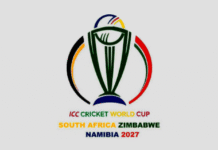To cricket or not to cricket?

Amit Hasan, a 15-year-old boy who lives in West Rajabazar area of the capital, goes to Kalabagan cricket ground every day with a gigantic bag on his back. His dream is to become a cricketer of Mashrafe Mortaza, Shakib Al-Hasan or Mushfiqur Rahim’s height someday. Amit knows only a few would make it that far, out of hundreds playing at his age level.
Still he pursues his dream. “There is no single night I do not go to the bed without dreaming of becoming a great cricketer,” he said.
Like Amit, thousands of youth around the country dream of becoming cricketers and play for the national team.
Since Bangladesh won the ICC Trophy in 1997 and beat Pakistan in their first World Cup in 1999, cricket has become the number one sport of the country while Shakib, Mashrafe or Mushfiq are arguably the most respected and followed celebrities.
Nevertheless, is it not an easy choice to choose cricket as a profession, neither for the youth nor for the parents.
Only around 150 players are now playing first class cricket, and even reaching that level does not guarantee a good career given that a player hardly remains fit past 35.
Does cricket guarantee economic solvency even to a first class player? The answer is a big ‘no’, according to former Bangladesh opener Javed Omar.
“A first class cricketer who plays at National Cricket League or Bangladesh Cricket League get a scanty amount of around Tk 15 lakh in a year. Is it enough to survive? Only some star players get hefty money by playing in first class level,” said Javed who represented Bangladesh in 40 Tests and 59 ODIs.
Javed regretted that there is no school cricket in the country although Nirman School Cricket once made a lot of players.
Another challenge the parents face in choosing cricket as a profession for their kids is the difficultly to continue regular studies alongside their practice sessions.
While institution like Bangladesh Krira Shikkha Protishtan (BKSP) is a solution to this problem, a few get the chance to secure a berth there.
He thinks the Bangladesh Cricket Board (BCB) should establish more institutions like BKSP at the divisional level.
Being a cricket-loving nation, a prodigy should easily get the support from his/her family during the initial days. How much support do the young talents get from their families?
A few lucky ones like Bangladesh’s southpaw pacer Mustafizur Rahman got that support. His elder brother regularly traveled 40 kilometres daily from his village home to Satkhira on scooter taking Mustafiz to play for a club there. A tacit Mustafiz on numerous occasions said that he might not have got the chance to rock the cricketing world without that support from his brother.
Batting legend Sachin Tendulkar has always remembered how much his elder brother Ajit Tendulkar contributed on his way to becoming a cricketer. On numerous occasions he said that it would have been impossible for him to play cricket had Ajit not been there to support him in the initial days.
Unfortunately, everyone does not get that support from their families and their talents dissipates at one point. We do have a lot crude cricketing talents in rural areas who cannot even afford buying expensive cricket kits.
Javed’s suggestion to establish government-funded BKSP-like institutions in divisional level can be an answer to this problem.
The board can take the lead, as the Bangladesh Cricket Board (BCS) is financially solvent enough to institutionalise the game and change it for the better.
For the family members of a 12 or 14-year-old boy, it is not easy to venture on uncertain profession of sports where there are many safer professions around.
“Taking cricket as a profession is still very risky in our country. Only the cricket board can change the scenario,” concluded Javed, one of only five players to carry the bat through the innings in both Tests and ODIs.









